Argentina
Things to DO
El Calafate
Southern Patagonian Ice Field
The SOUTHERN PATAGONIAN ICE FIELD is (after Antarctica and Greenland) the third largest glacier
area of the world.
This mass of ice is continuously nourished by the snowfall that the wet winds produce as they rise over
the Andes. Big glaciers flow down from the ice field in every direction, some calve into into lakes on the
eastern side and many calve into the Pacific Fjords on the western side.
Los Glaciares National Park was created in 1937 with the objective of protecting a vast area of
continental ice and glaciers from harm or destruction.
In 1981, UNESCO declared these glaciers Natural World Heritage Site due to the their attractiveness,
scientific interest and endangered wildlife. Perito Moreno Glacier is the best-known and most visited
Glacier, and the bigger Viedma and Upsala glaciers are also easily enjoyed.
The Chilean side offers beautiful sites and glaciers like the Grey, Pio XI, Tyndall, and many others that
can be visited.
Even though it is shrinking like most of the world’s ice, the huge Patagonian Ice Field still survives and
is the chance for us to witness a completely glaciar-covered landscape
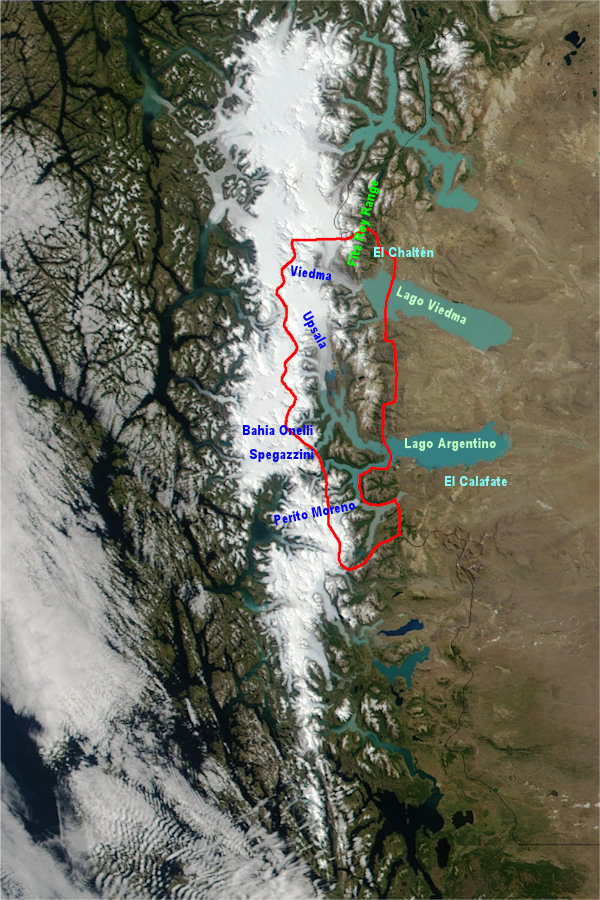
Southern Patagonian Ice cap
North to South length
Average width
Minimum width
Maximum width
Total area
40 km
17 Km
80 Km
13.000 Km2
Los Glaciares National Park
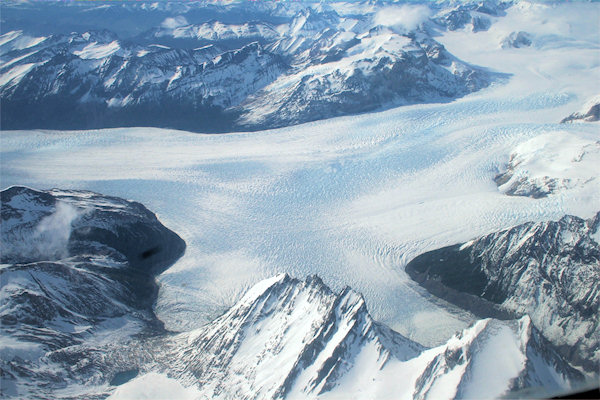 |
|||||
Situated in the southwestern tip of the Argentine province of Santa Cruz, and covering an area of over
600.000 hectares, this National Park stretches from the wind-swept steppe in the east to the Andes Mountains
in the west, which mark the natural boundary between Argentina and Chile.
The northern half of the park takes in the Fitz Roy Range, indisputably one of te most majestic
mountain areas of the Andes and now a famous spot for trekking and mountaineering. At the entrance to the
northern sector, the village of El Chaltén was slapped together in 1985 to claim the land before
Chile would.
The centerpiece of the southern sector is without a doubt, breathtaking Glacier Perito Moreno, one of
earth's most dynamic and accessible ice fields.
The mane gateway town to the park's southern sector is El Calafate The center of town is prettily lit,
three-lined and stuffed with souvevenir shops, restaurants and showy weekend vacationers.
Perito Moreno Glacier
Within Los Glaciares National Park, 82 km from the town of El Calafate, Perito Moreno Glacier appears immense and majestic before the amazed eyes of the visitors.
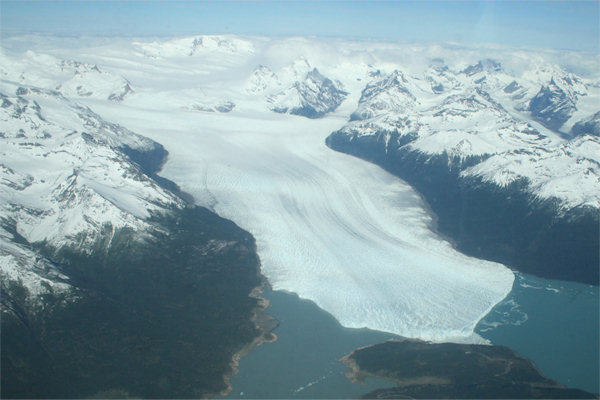 |
|||||
It is one of the few glaciers in the world which is in constant advance and growth. The lenght of this glacier
is about 30 km; its front is 5 km wide and its height reaches 60 meters above water level.
Perito Moreno, unlike the other glaciers, has shown significant movements. The gigantic blocks of ice that
detach from the glacier, fall into the Témpanos Channel consequently blocking it.
When this occurs, the waters of the South and Rico arms of Lake Argentino are damed up, which course an
outstandingly increasing of their level. In 1988 a 25-meter-high increase was recorded, and a maximum of
approximately 30 meters is estimated.
Due to the water pressure, the ice finally breaks and the drainage through the Témpanos Channel is restored.
This phenomenon occured every three years since 1935.
At the end of the 19th century, the glacier was as far as 750 m from the Magallanes Peninsula and it was only in
1917 that it reached the coast and blocked the channel for a couple of weeks for the first time.
In 1988 the glacier blocked the channel for the last time but the ice has not broken ever since.
Walking on the Glaciar Perito Moreno
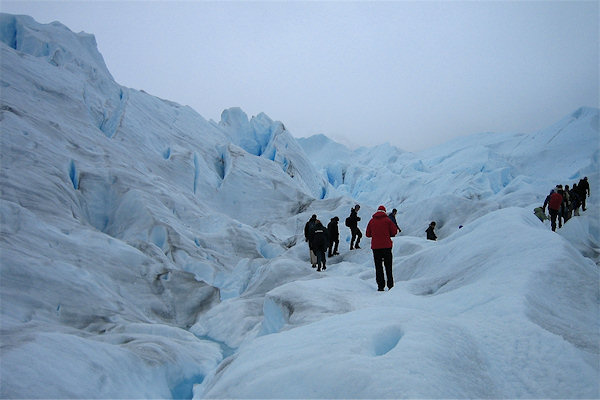 |
|||||
Just as sailing near the glacier offers a unique visual perspective, walking on the glacier is an
unforgettable experience.
The journey starts when you're taken toward the Bajo de la Sombra pier, where you embark on a vessel
which takes you across the Rico arm of Lake Argentino. After a twenty-minute trip, you disembark at the foot
of Mt Moreno.
Once on the ground, travelers make incursions into the Magellanic forests during half an hour always in the
company of a specialized guide.
Next, crampons are given out in order to walk on the surface of the glacier.
The tour one hour and a half and it is highly attractive due to the direct contact with the glacial ice.
Here you may see many crevasses, drains and superficial watercourses, as well as small inner blue lagoons.
As weather can change fast, it is suggested to wear sports footwear (trekking shoes if possible), thick socks,
long pants, a jacket, an anorak, a sweatshirt, a sweater, sunglasses, sun-block cream, gloves and a cap.
Other Glacier's
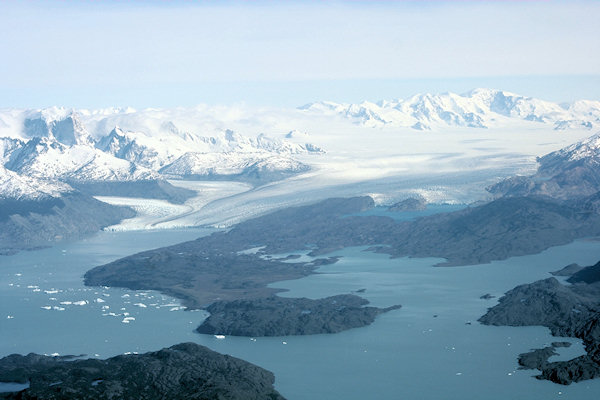 |
|||||
Upsala Glacier
Upsala Glacier is a branched-valley glacier fed by several other glaciers. Its basin has a surface of about
sq 1.000 km; it's lenght is about 60 Km; its front is 5-7 km wide and its height reaches 60-80 meters above
water level.
It was named after the Swedish city of Upsala, whose university sponsored the first glaciological studie at
the beginning of the 20th century. The glacier has retreated significantly, mainly during thelast decade.
Nevertheless, it's the largest glacier of the national Park and the longest in South America.
Spegazzini Glacier
The Spegazzini glacier characterizes by being the highest glacier often visited. (Length: 25 km;
Height: 80-135 meters)
It's also unique because it shows no signs of receding, a common phenomenon in large glaciers; on the
contrary its front wall seems larger. The glacier is led by both the Mayo Northe and Peineta Glaciers.
The Glacier was named after the botanist carlos Spegazzini who made the first studies of the local flora and
it is considered one of the most charming ones due to its natural surrounding.
Icebergs
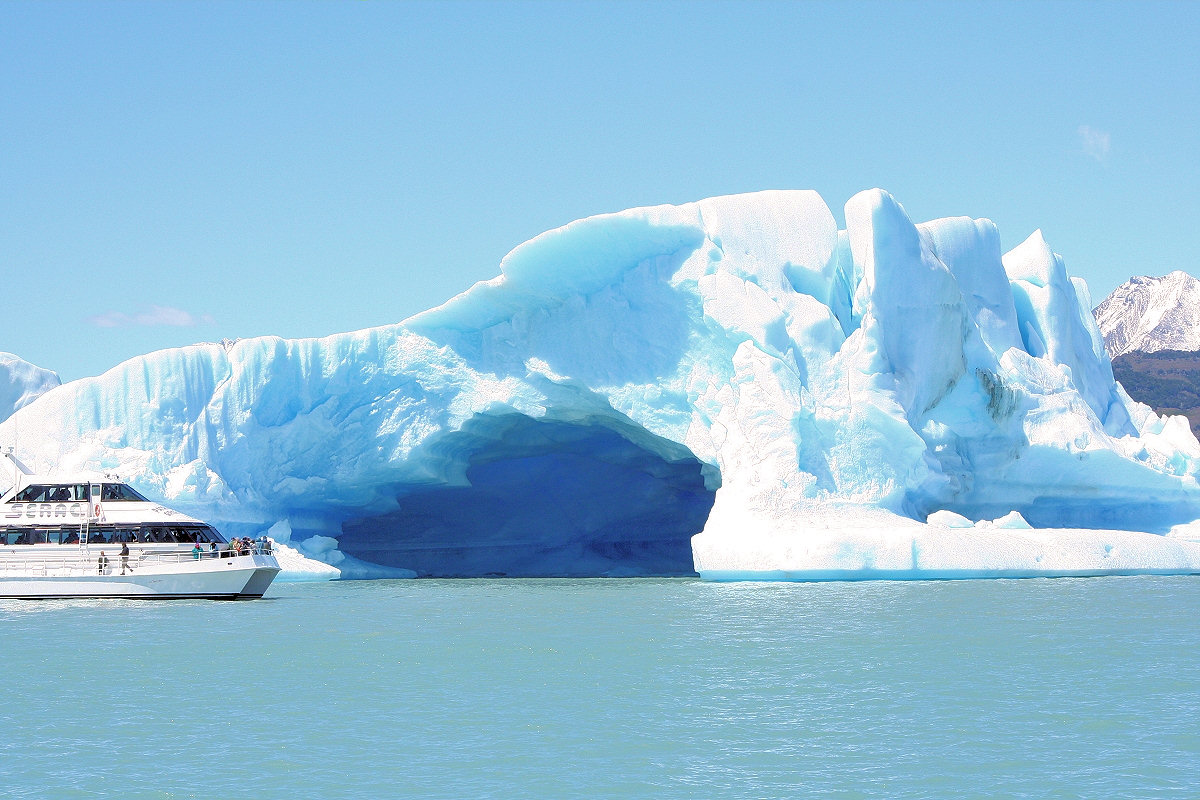 |
|||||
Broken off from the end of a glacier as a consequence of ablation and water movement, there are a lot
of Icebergs spreading around over the Lago Argentino.
Their most attractive characteristics are the variety, shape colour and size. But mainly they show only
the 15% of their actual size above the level of water "hiding" the other 85% under it.
The bluish colour of the ice is given by the degree of compression and the reflected effect of light.
The greenish colour of the water is known as Glacial Milk.
It comes from the mineral particles that float on the water. These are the particles that the glacier has
carried along when eroding the layer beneath.
Bahia Onelli
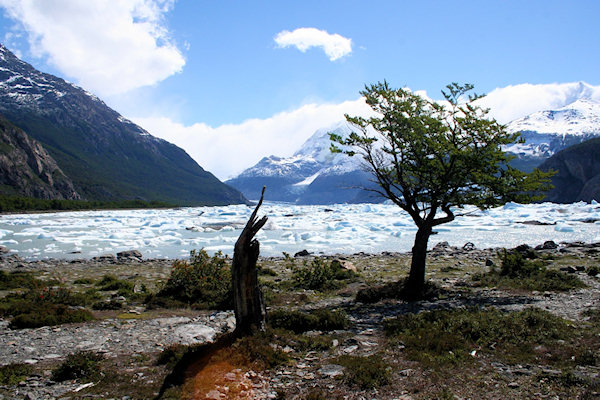 |
|||||
Locally known as Lago Onelli, this natural lagoon is, by all accounts, fascinatingly beautiful. Only a
few hundred meters from Lago Argentino, Lake Onelli is almost completely enclosed by a combination of
mountains and glaciers.
It is uniquely spotted with countless icebergs that have fallen from one of the three surrounding glaciers,
including the Onelli, Bolado, and Agassiz formations.
The majestic forest which borders the Onelli lake houses typical Patagonian flora and fauna, providing a
rich experience for travelers and ecologists alike.
Blanketed in a thick coat of mossy growth, Lenga and Guindo trees comprise the majority of the foliage in
the region.
These types of deciduous trees and shrubs are native to the Andes mountain range and can be found
throughout Argentina and Chile.
Nimes Lagoon Municipal Reserve
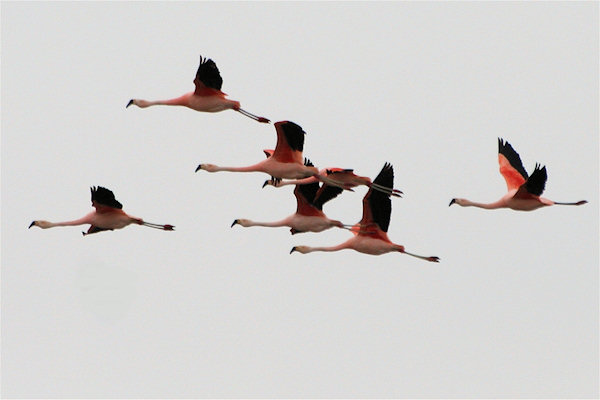 |
|||||
Just about 3 km north of El Calafate you can find the "Nimes Lagoon Municipal Reserve".
It's an excellent opportunity to see the local birds.
The species which are most likely to be seen are: Grebes, Herons, Ibis, Flamingos, Swans, Ducks, Geese,
Coots, Hawks, Caracaras, Chimangos, Falcons, Lapwings, Seagulls, Terns, Sandpipers, Oystercatchers, Swallows,
Meadowlarks, Mockingbirds, Rufous-backed Negritos and Sierra-finches, among others.